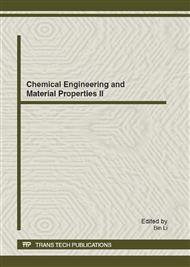p.198
p.203
p.207
p.212
p.216
p.221
p.225
p.229
p.234
Synthesis of Metal Core in the Apoferritin Cavity
Abstract:
Many methods to produce NPs have been studied. Among them, the molecular level understanding of the formation of solids in biological systems has provided inspiration for the controlled formation of novel inorganic materials. The use of a protein cavity as the growth field of NPs provides one candidate method for obtaining uniform particle size. The host-guest relationship between these protein cages and the encapsulated material is based primarily on a complementary electrostatic interaction. Charged interfaces play important roles in defining electrostatically distinct environments for spatially defined encapsulation. The electrostatic interactions can be approximated by Guoy-Chapman theory of charged interfaces. These interactions are proposed at the interior of protein cages such as ferritin and viruses. The protein cage with a highly charged interior surface with pores that allow molecular access to the inside of the protein could act as a constrained reaction vessel. The present paper will focus on the synthesis of Metal NPs using ferritin.
Info:
Periodical:
Pages:
216-220
Citation:
Online since:
July 2012
Authors:
Keywords:
Price:
Сopyright:
© 2012 Trans Tech Publications Ltd. All Rights Reserved
Share:
Citation:


